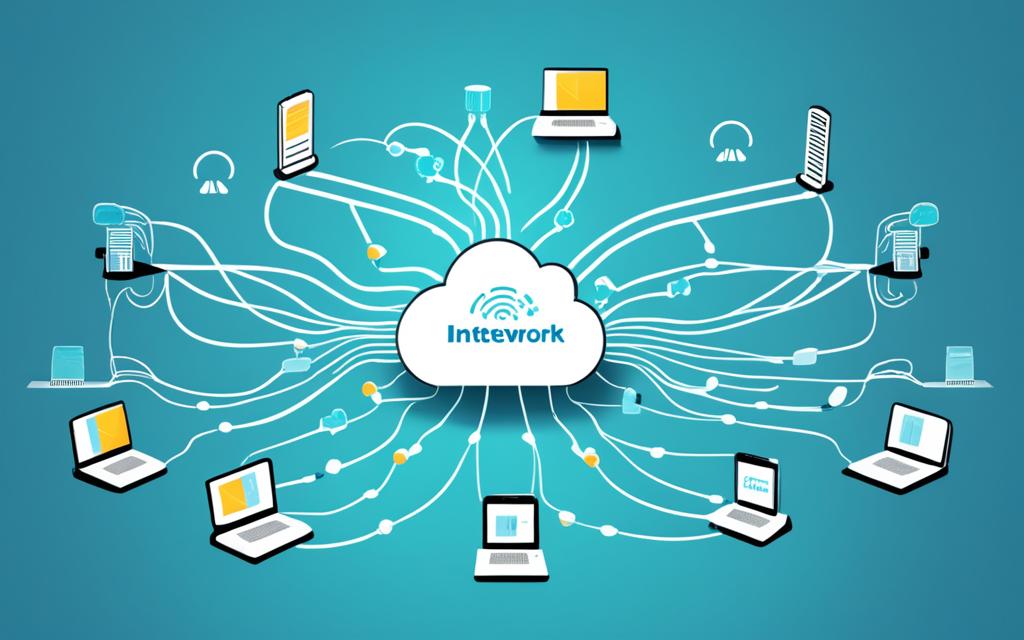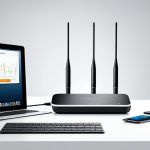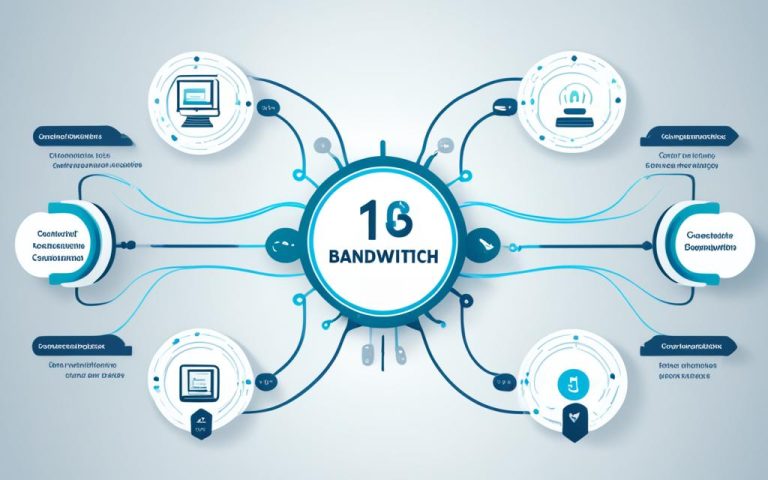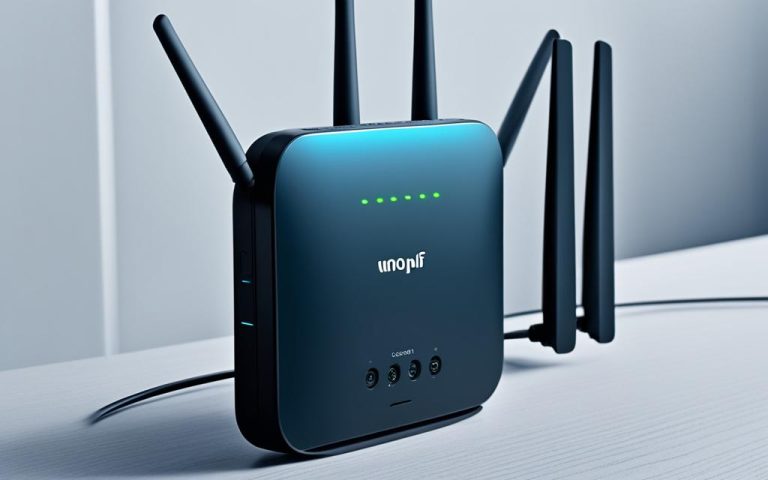Cross-device connectivity has become indispensable in today’s digital landscape. With individuals relying on multiple devices for seamless communication, integrating all these devices into a Personal Area Network (PAN) has become crucial.
The potential economic impact of the Internet of Things (IoT) is estimated to reach $12.6 trillion by 2025, highlighting the need for efficient PANs. However, organizations face challenges in achieving seamless connectivity, particularly across geographic regions with inconsistent network availability.
To overcome these challenges, a collaborative industry approach is required to establish a unified data standard and optimize low-power IoT applications in a pan-European environment. A proposed solution in this regard is the 0G-WAN standard, which aims to provide reliable and cost-effective connectivity for IoT devices operating on sub-gigahertz radio bands.
The 0G-WAN working party aims to align with international standards organizations, such as GS1, to establish a consensus on the 0G-WAN standard by 2023. Implementations of this standard are expected to begin in early 2024.
By achieving seamless cross-device connectivity with PANs, organizations can unlock the full potential of the Internet of Things, enhancing productivity and enabling innovative solutions for various industries.
The Demand for Mobile IoT Solutions
The mobile IoT landscape is witnessing a rapid expansion, with millions of connected devices operating on licensed cellular and unlicensed sub-gigahertz radio bands. However, these devices face a significant challenge – they are not currently linked to multiple networks, resulting in technical and contractual obstacles for unrestricted roaming and large-scale deployments.
To address these challenges, organizations are looking towards low-power wide-area networks (LPWANs) as a cost-effective solution for their IoT deployments. LPWANs offer long-range coverage with low-power consumption, making them ideal for applications that require extended battery life and asset monitoring.
However, the current LPWAN landscape lacks interoperability and comprehensive coverage, limiting its widespread adoption. This poses a roadblock for achieving genuine pan-European connectivity and supporting active asset monitoring across Europe.
To overcome these limitations, there is a growing need for a densified LPWAN network that provides stronger network connectivity assurance, redundancy, and scalability. Organizations require a seamless network infrastructure that can accommodate the movement of assets across different regions and countries.
In order to meet these demands and unlock the full potential of mobile IoT, industry players are collaborating to establish a unified data standard and enhance network connectivity. By leveraging technology and industry expertise, they aim to develop a reliable and comprehensive network infrastructure that supports asset monitoring and enables seamless communication between devices.
It is through these collaborative efforts that the mobile IoT landscape can evolve into a robust ecosystem, driving innovation, scalability, and cost reduction for organizations across various industries.
Establishing a Common Standard for Cross-Network Compatibility
Sigfox, a leading provider of sub-gigahertz networks, offers pan-European connectivity solutions for IoT devices. However, it is important to note that Sigfox’s coverage is not unlimited, posing challenges for certain IoT applications. To address this limitation, the industry has established the 0G-WAN working party, with the aim of creating a unified data standard that enables applications to seamlessly work across multiple sub-gigahertz networks.
The cornerstone of this model is the establishment of a data transmission limit and message volume that ensures compatibility with all accessible sub-gigahertz networks. By setting these standards, IoT devices can effectively utilize the available network resources and achieve optimal connectivity. The collaborative efforts of the 0G-WAN working party are focused on establishing consensus on the 0G-WAN standard with international standards organizations such as GS1 by 2023.
Benefits of Cross-Network Compatibility
- Enhanced Connectivity: The adoption of a common standard facilitates seamless connectivity across multiple sub-gigahertz networks, allowing IoT devices to operate efficiently and reliably.
- Streamlined Device Design: With a unified data standard, IoT device manufacturers can design devices that are compatible with various sub-gigahertz networks, reducing complexity and improving interoperability.
- Efficient Data Transmission: The established standards for data transmission enable optimized utilization of network resources, ensuring efficient data transfer between IoT devices and networks.
- Scalability and Expansion: Cross-network compatibility paves the way for scalable IoT deployments, as devices can seamlessly connect to different sub-gigahertz networks, thereby extending network coverage and expanding applications.
To illustrate the potential impact of cross-network compatibility, consider the following table:
| IoT Application | Compatibility with 0G-WAN Standard | Data Transmission Limit |
|---|---|---|
| Smart Agriculture | Yes | 500KB per day |
| Asset Tracking | Yes | 1MB per month |
| Environmental Monitoring | Yes | 250KB per hour |
This table showcases the compatibility of different IoT applications with the 0G-WAN standard and the corresponding data transmission limits. By adhering to these standardized limits, IoT devices can effectively utilize sub-gigahertz networks while ensuring efficient and reliable data transmission.
By establishing a common standard for cross-network compatibility, the industry is paving the way for seamless connectivity and optimized utilization of sub-gigahertz networks. The 0G-WAN working party’s efforts are crucial in defining the standards necessary for the future success of IoT deployments.

Accelerating Progress in 0G-WAN Implementation
The 0G-WAN initiative is making significant strides towards achieving industry collaboration and accelerating the implementation of this groundbreaking technology. Various key players in the industry, including semiconductor manufacturers, tower companies, logistics providers, and device makers, have already joined the 0G-WAN working party, demonstrating their commitment to advancing the adoption of 0G-WAN.
One of the key focuses of the 0G-WAN working party is the development of 0G-WAN devices that offer multi-network capability and support both static and mobile assets. This collaborative effort among device manufacturers is crucial in ensuring the successful integration of 0G-WAN technology into different IoT applications.
To further expedite the implementation process, several working party members have agreed to conduct trials of 0G-WAN devices in their customer supply chains. The findings from these trials will be shared within the 0G-WAN community, fostering knowledge exchange and collective learnings.
This collaborative model of the 0G-WAN initiative has proven to be effective in uniting the sub-gigahertz community. By leveraging the expertise and resources of multiple stakeholders, the industry is accelerating progress towards a common standard for cost-effective and efficient IoT deployments across Europe.
| Benefits of Industry Collaboration in 0G-WAN Implementation |
|---|
| Enhanced technical expertise and diverse perspectives |
| Access to a wider range of resources and capabilities |
| Shared learnings and best practices for optimized implementation |
| Reduced development time and cost through efficient collaboration |
| Accelerated deployment of 0G-WAN devices in various industries |
The collaboration of industry stakeholders is pivotal in driving the successful implementation of 0G-WAN technology. By harnessing the collective knowledge and expertise of device manufacturers, network convergence can be achieved, enabling seamless multi-network capability that empowers organizations to unlock the full potential of IoT.
Pioneering the Future of IoT with Collaborative Industry Efforts
“The 0G-WAN initiative exemplifies the power of industry collaboration in driving innovation and overcoming technological barriers. Through collective efforts, we are paving the way for cost-effective and efficient IoT deployments with unparalleled multi-network capability.” – [Industry Expert Name], [Position/Title] at [Company/Organization]
The Potential of Cross-Device Connectivity in PANs
A converged IoT vision powered by cross-device connectivity holds great potential for digitalization and automation. By enabling nearly real-time information exchange across various assets, this vision can revolutionize operational efficiency and control. The seamless integration of diverse devices within a Personal Area Network (PAN) can unlock new possibilities for businesses and individuals alike.
The adoption of the 0G-WAN standard plays a crucial role in realizing the full potential of cross-device connectivity in PANs. As a standardized network protocol, 0G-WAN provides the necessary network certainty, reliability, redundancy, scalability, and device longevity required for confirming and approving IoT business cases. Its implementation can lead to significant advancements in various key areas:
- Scalability: With cross-device connectivity, organizations can effortlessly expand their IoT infrastructure, accommodating a growing number of devices and connections without compromising performance or security.
- Cost Reduction: By streamlining operations and optimizing resource allocation, cross-device connectivity in PANs can result in significant cost savings through increased efficiency and reduced maintenance expenses.
- Innovation: The convergence of IoT devices within PANs opens up a world of possibilities for innovation and new applications. By enabling seamless communication among devices, businesses can explore novel use cases and create innovative solutions.
- Digitalization Goals: Cross-device connectivity aligns with the digitalization goals of organizations, enabling them to gather real-time data, automate processes, and enhance decision-making capabilities.
| Advantages | Impact |
|---|---|
| Scalability | Enables expansion without compromising performance |
| Cost Reduction | Optimizes resource allocation and reduces expenses |
| Innovation | Explores new use cases and creates solutions |
| Digitalization Goals | Gathers real-time data and enhances decision-making |
Collaboration amongst industry stakeholders and the adoption of open standard interfaces are vital to fully harnessing the potential of cross-device connectivity in PANs. By working together, organizations can address interoperability challenges, drive innovation, and create a harmonized ecosystem that benefits all stakeholders.
Implementing a converged IoT approach powered by cross-device connectivity brings us closer to a future where devices seamlessly communicate and collaborate, paving the way for enhanced productivity, improved customer experiences, and transformative opportunities across industries.
Conclusion
Achieving seamless communication and pan-European connectivity is crucial for organizations in today’s digital landscape. The collaborative efforts of industry stakeholders, exemplified by the 0G-WAN working party, are paving the way for the development of a unified data standard. This standard will enable interoperability and integration across multiple networks, addressing the challenges of cross-device connectivity.
The agreement on the 0G-WAN standard, expected in 2023, is a significant milestone towards achieving seamless connectivity across devices and networks. With widespread implementations projected to begin in 2024, organizations can look forward to enhanced communication and collaboration in the IoT space.
Industry commitment and collaboration play a vital role in ensuring the success of mobile IoT deployments. By joining forces and embracing a collaborative mindset, stakeholders are instilling confidence in the longevity and effectiveness of these deployments. Together, they are driving innovation, fostering industry growth, and realizing the full potential of cross-device connectivity and pan-European integration in the IoT ecosystem.
FAQ
What is PAN in the context of cross-device connectivity?
PAN stands for Personal Area Network. It refers to the interconnected devices and networks that enable seamless communication and integration across multiple devices used by individuals or within a specific environment.
What is mobile IoT, and why is it in demand?
Mobile IoT refers to the network of connected devices that operate on low-power wide-area networks (LPWANs). It is in high demand because it provides a cost-effective solution for IoT deployments and allows organizations to monitor and track assets across different regions and countries.
What is the role of Sigfox in providing pan-European connectivity for IoT devices?
Sigfox is a provider of sub-gigahertz networks that offer pan-European connectivity for IoT devices. While Sigfox provides widespread coverage, it does have limitations in terms of unlimited coverage for all types of IoT applications.
How does the 0G-WAN standard address the challenges of cross-network compatibility?
The 0G-WAN standard aims to establish a unified data standard that enables applications to work across multiple sub-gigahertz networks. It sets a data transmission limit and message volume to ensure compatibility with all accessible networks, thus addressing the challenges of cross-network compatibility.
What is the timeline for the agreement on the 0G-WAN standard and its implementation?
The agreement on the 0G-WAN standard is expected to take place in 2023. Widespread implementations are projected to begin in early 2024, paving the way for cost-effective and efficient IoT deployments across Europe.
How does the 0G-WAN working party accelerate progress in implementation?
The 0G-WAN working party comprises industry stakeholders, including semiconductor manufacturers, tower companies, logistics providers, and device makers. They collaborate to create 0G-WAN devices that support both static and mobile assets. These devices are trialed in customer supply chains, and the findings are shared among the community, accelerating progress in implementation.
What is the potential of cross-device connectivity in PANs?
A converged IoT vision powered by cross-device connectivity holds great potential for digitalization and automation. It enables nearly real-time information exchange and can revolutionize operational efficiency, control, scalability, cost reduction, and innovation.
Why is collaboration and industry commitment crucial for achieving seamless cross-device connectivity?
Collaboration and industry commitment are crucial because they ensure that a unified data standard is developed to enable interoperability and integration across multiple networks. By joining forces and embracing a collaborative mindset, the market instills confidence in the longevity and success of mobile IoT deployments.



















